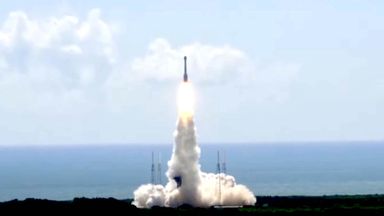NASA has reported that an official U.S. methane estimate is wrong.
In a new satellite analysis, an international team of scientists found that methane emissions in the U.S. were higher in 2019 than previously estimated by the U.S. Environmental Protection Agency (EPA), according to the NASA Earth Observatory.
The team found that emissions were 13 percent higher that year than originally thought.
Methane, a "super pollutant" in terms of climate impact, contributes 30 times more to global warming per ton than carbon dioxide. This potent but short-lived greenhouse gas accounts for about one-third of the global warming caused by all greenhouse gases. Because of methane's significant impact, the United States has joined the Global Methane Pledge, which aims for a 30 percent reduction in global emissions from 2020 levels by 2030.
The analysis also found that methane emissions from oil and gas operations were 12 percent higher than the EPA's estimates, while emissions from livestock production were estimated to be 11 percent higher. The third largest source was landfills, which were 50 percent higher. This contrasts with coal mining, which was 28 percent lower than the estimates.
To reach their findings, the scientists utilized data from the TROPOspheric Monitoring Instrument on the Copernicus Sentinel-5 Precursor satellite and the GEOS-Chem atmospheric transport model, the NASA Earth Observatory reported. This method allowed the scientists to track methane emissions from the atmosphere to their ground sources, creating a detailed emissions map.
The results suggest potential underestimations in the EPA's inventory, especially for landfills and oil and gas operations. The results also highlight the importance of using satellite data and atmospheric models to enhance the precision of greenhouse gas estimates.
Landfills often estimate emissions based on stored waste and captured methane, but these estimates can overlook emissions due to operational changes or construction activities. The new findings show the need for more comprehensive monitoring and reporting to accurately capture all methane emission sources.
Although methane has a relatively short atmospheric lifetime, about a decade, its global warming potential during that time is considerable. This contributes to rising global temperatures, which can lead to severe weather events, melting ice caps and disrupted ecosystems.
Additionally, methane emissions often come from sources such as landfills, livestock operations and fossil fuel production that also pose other environmental and health risks. Reducing methane emissions is therefore crucial for mitigating climate change and protecting environmental health.
These findings show that satellite-based methods can provide valuable insights and improve the accuracy of national greenhouse gas inventories, which are vital for climate policy and mitigation efforts.
Do you have a tip on a science story that Newsweek should be covering? Do you have a question about methane emissions? Let us know via science@newsweek.com.
Disclaimer: The copyright of this article belongs to the original author. Reposting this article is solely for the purpose of information dissemination and does not constitute any investment advice. If there is any infringement, please contact us immediately. We will make corrections or deletions as necessary. Thank you.



